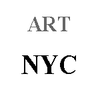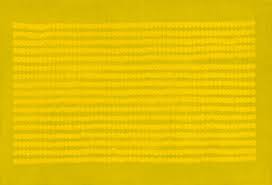If you are interested in this artist
Please contact to us
We can offer more information about this artist's works.
theartnyc@gmail.com
Kim Guiline (b. 1936) graduated from Hankuk University of Foreign Studies with degree in French in 1960. After moving to France, Kim studied art history at Dijon University and graduated from Ecole Nationale des Beaus-Arts in Paris, where he lives and works to this day. Throughout his 30 year career as an artist, Kim has consistently pursued the idea of flatness. While he showed tendency to objectify pure black and white flat paintings in the 70s, Kim improved flat monochrome works which consist of small squares and egg-shaped dots as basic units within rectangular canvas in the 80s. Reaching 1990s, Kim used bright primary colors to present works that affirmed the dualistic relationship.
To work within physical phenomenon, Kim chose black and white and worked with them for more than ten years. Following the principle that colors change along with time, Kim considered black as a color and painted over it multiple times to reach a point where the black emits light and can’t absorb any more light. In opposition to black absorbing light and white emitting light, Kim painted over the surface until black emitted light and white absorbed light. Although black and white are normally disregarded as colors in Western paintings, Kim’s monochrome works show that black and white can function as colors.
The colors—white, gray and black—that form Kim’s work are commonly known as achromatic colors. However, for Kim, the achromatic colors are not confined to its physical conditions—difference in brightness but without color and purity—but contain equivocal meaning of appearance and disappearance as logical conclusion to all colors in that they come to fade and ultimately disappear as result of passing time. And rather than limited to achromatic colors, it should be seen as characteristic of the color itself.
Kim’s black and white monochrome paintings are reminiscent of Ad Reinhardt's monochrome paintings. Kim Guiline's monochrome painting series What is Seen and What is Not Seen, got its name from a passage in a work by the phenomenological philosopher Merleau-Ponty. This work was created by a repeated application of dozens of layers of black and white. Thin paint was sprayed on the surface to suppress the pigment and remove excess oil. Then the entire surface was scraped with a chisel to make indentations. Multiple repetitions of this technique completed the work. The act of digging out grooves and refilling them with spray paint may show the significance of Merleau-Ponty's phrase about the difference between perception and recognition. In that sense Kim's act of spraying can be called a repeated endeavor to reveal and hide the accumulated layers of paint from the eyes of spectators.
Share
Couldn't load pickup availability


